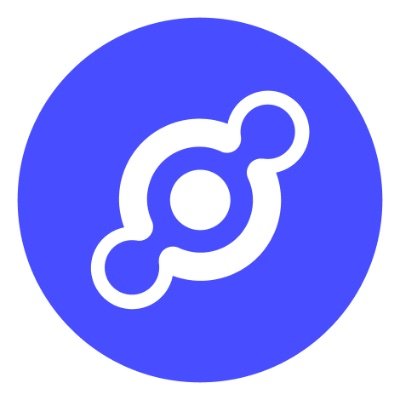Panoramic Analysis of DePIN Track Project MXC: Pioneer Ecosystem of Distributed IoT
Author: Black Mario, Binance
We see that, in addition to DePIN concept projects like Helium, Render Network, Theta Network, and IoTEX being mentioned and gaining attention in the market again, the veteran IoT blockchain project MXC, which is also part of the DePIN concept, has once again attracted the attention of the capital market in this round of market activity. It is reported that MXC recently received a strategic investment from JDI Ventures, a DePIN investment fund under the well-known blockchain hardware manufacturer JDI Global, with a financing amount as high as 10 million USD. JDI Global will work with the MXC team to provide support in funding, hardware development, market influence, and other aspects for startup DePIN projects, accelerating the construction of the DePIN ecosystem. After the financing, MXC co-founder Aaron Wagener also attended the 2024 DePIN Global Hardware Conference held on April 8 this year at Cyberport in Hong Kong, further enhancing MXC's visibility in the industry.
With the promotion of this favorable news, its token $MXC has also welcomed a new round of increases under multiple favorable conditions, and MXC has once again become the focal ecosystem in the DePIN track.
In fact, MXC is one of the earliest projects in the crypto industry focused on IoT (Internet of Things) blockchain concepts and is also one of the pioneering projects in the DePIN field. Since its market launch in 2018, the MXC IoT ecosystem has been continuously expanding horizontally and has established collaborations with local governments in multiple countries. Although MXC has not always performed brilliantly amidst the changing narratives in the crypto industry, on one hand, the trend of DePIN is becoming clearer with great potential in the track, and on the other hand, with the explosion of various fields such as AI, autonomous driving, and smart home IoT, the global IoT field is entering a new stage of development, making MXC an underestimated potential ecosystem.
This article will introduce and analyze MXC from multiple aspects to further enhance readers' understanding of MXC.
Distributed IoT Pioneer Ecosystem: MXC
MXC is a veteran crypto project initiated in 2017 by a group of experts and enthusiasts in IoT and blockchain technology, and it launched its mainnet after releasing its white paper to the market in 2018. Focusing on MXC (Machine eXchange Protocol), it is a protocol aimed at providing decentralized solutions for data exchange and communication for IoT devices. By leveraging blockchain technology, MXC aims to address the inefficiencies and security issues in data exchange within the IoT field, enabling seamless and secure data flow between devices. MXC hopes to establish a global, low-power IoT network that allows individuals and businesses to easily connect and manage their IoT devices while improving the efficiency and transparency of data transactions.

MXC connects with off-chain hardware devices and uses the on-chain part of the MX Protocol to achieve data collection and processing in a distributed manner, allowing the data system to operate smoothly with the support of the smart bidding protocol. At the same time, through the "Proof of Participation" consensus mechanism, it not only ensures the sustainability and reliability of the LPWAN network but also allows data providers to access the system through hardware devices and earn rewards.
With the development of MXC, it also sought to further expand and build privacy by constructing the MX Protocol on Layer 3 last year (based on Arbitrum and compatible with zkEVM). Of course, the introduction of Layer 3 not only provides gains for the operation of its system but also broadens the narrative direction of its ecosystem.
Core Features
1. LPWAN Technology
Low Power Wide Area Network (LPWAN) is a key technology in the IoT field that allows long-distance communication (typically ranging from several kilometers to tens of kilometers) while maintaining low power consumption, making it particularly suitable for devices that need to operate for long periods without frequent battery replacements. MXC provides an innovative solution through its unique LPWAN technology to facilitate decentralized IoT communication and data exchange.
The advantages of the MXC IoT ecosystem through the adoption of LPWAN technology include:
- Long-distance communication capability: MXC's LPWAN technology can support communication distances of several kilometers or even farther, which is particularly important for covering vast urban or rural areas. The long-distance communication capability ensures that low-power devices can connect without complex network infrastructure.
- Low power design: A key advantage of LPWAN technology is its low energy consumption, meaning that devices can maintain battery life for several years during remote communication. This is crucial for sensors and devices installed in hard-to-reach locations.
- High connection density: MXC's network design allows for a large number of devices to connect within a vast area. This provides possibilities for creating complex IoT application scenarios, such as smart cities, precision agriculture, or environmental monitoring.
- Spectrum utilization: MXC's LPWAN technology typically utilizes unlicensed spectrum, such as the frequency bands used by LoRa (Long Range) technology, which helps reduce deployment and operational costs while avoiding the complexities and expenses of obtaining spectrum licenses.
Additionally, the MX Protocol part of MXC is a decentralized network architecture (currently deployed on MoonChain), where anyone can deploy an LPWAN gateway, join the MXC network, and start transmitting data. This open network model promotes community participation and rapid network expansion. Meanwhile, the buyers and sellers of data established under smart contracts can automatically execute contract terms and use $MXC tokens as incentives, which is crucial for motivating network participants and supporting complex data economic models.
2. Smart Bidding Protocol and Decentralized Data Market
In the traditional IoT field, there are two main issues: competition for frequency resources and how to allocate and share the data generated by IoT.
MXC has proposed a decentralized data market concept aimed at facilitating the free flow of data and value discovery. By operating on MoonChain, MXC ensures secure and transparent transactions of data, allowing data producers, consumers, analysts, and other parties to exchange data in a fair and open environment. This not only opens up new profit sources for IoT data but also helps unlock the immense potential of data, driving the development of smart decision-making and intelligent services.
On this basis, MXC introduced a unique smart bidding system that allows devices in the network to dynamically adjust their bidding for channel usage rights based on data transmission needs and network conditions. In situations where there is a high volume of IoT data and conflicts in link resources, MXC utilizes the smart bidding protocol to allow sensors to bid for network resources, ensuring the transmission of critical data.
- Sensor owners (in offline IoT scenarios) can purchase network resources through market bidding.
- Gateway owners (mainly data providers in the network) can earn rewards by utilizing their idle resources.
Unlike current mobile network operators, this price is determined by market competition.
This mechanism not only optimizes the allocation of network resources but also creates revenue opportunities for network participants, incentivizing more users to join the network, thereby further expanding the network scale and improving network quality.
3. PoP Consensus Mechanism
The MXC network adopts the Proof of Participation (PoP) consensus mechanism, an innovative blockchain consensus algorithm designed to provide secure and efficient data exchange and communication solutions for its IoT network, ensuring the sustainability and reliability of the LPWAN network. PoP focuses on the actual participation and contributions of participants rather than merely on computational power or token holdings.
Based on the PoP consensus mechanism, the contributions of network participants (such as data providers, data consumers, network operators, etc.) are assessed by their level of activity and participation in the network. This includes factors such as device online time, frequency and quality of data transmission, ensuring rewards for those who truly add value to the network.
According to the size of user contributions, the system automatically allocates rewards, which can be in the form of MXC tokens or other incentives. This reward mechanism promotes a healthier and more active network ecosystem. Furthermore, by rewarding users who genuinely participate and contribute to the network, the PoP consensus mechanism increases the cost and difficulty for malicious attackers to control the network, thereby enhancing the security and stability of the network.
Currently, users can access the network through the M2 Pro Miner hardware device launched by MXC, which is an IoT mining machine specifically designed for the MXC network. The MXC miner operates by connecting to the on-chain part of the MX Protocol, providing connection points for surrounding IoT devices to collect and transmit data. In this way, miner participants (miners) can earn $MXC tokens as rewards. This process not only supports the development of the MXC ecosystem but also provides miners with a relatively passive source of income. Currently, users can easily manage the health of their miners through the AXS App, further expanding the application scope of the MX Protocol.
4. Layer3 Chain MoonChain
For MXC, as more and more devices connect to the network, maintaining efficient operation and managing thousands of communication flows has become a challenge. Currently, MXC is also seeking to ensure scalability and efficiency while pursuing privacy by building the MX Protocol on Layer 3.
Currently, MXC has built a Layer 3 chain MoonChain around Arbitrum that is compatible with zkEVM, establishing the IoT platform MXProtocol as a dedicated chain for DePIN. By using ZK-Rollup zero-knowledge proof technology to build an EVM network, it further ensures the security and stability of data transmission for IoT nodes. MXC is also the first Layer 3 blockchain ecosystem built on Arbitrum.
Relatively speaking, Layer 3 not only receives a series of support from Ethereum, Layer 2, and other chains but also has advantages in scalability. It is reported that the cross-chain interaction between MXC zkEVM and Ethereum takes less than 1 minute, with a block time of 10 seconds. Meanwhile, the $MXC token serves as the gas token for network transactions, which is expected to improve interaction efficiency and reduce transaction costs. After the Cancun upgrade is completed, transaction costs for Layer 2 and Layer 3 are expected to drop significantly again.
Currently, the MoonChain zkEVM has produced 401,894 blocks, with a total of 130,000 accounts, and has released 317 types of tokens. The network is in a stable development process.

Moreover, the introduction of zkEVM not only brings the possibility of privacy to MXC but also lays the foundation for building a large number of native dApps around the IoT system. MXC, from its early IoT infrastructure, is expected to further develop into a Web3 IoT application ecosystem. It is reported that dozens of DePIN projects are currently planning to deploy on MoonChain.
Current Status of Ecosystem Development
1. Business Development
MXC is one of the earliest projects researching blockchain IoT, and since its market launch in 2018, it has achieved several landing progress. From its current business situation, its main cooperation direction is to enhance smart cities. By integrating blockchain technology, efficient and stable operation can be achieved in various aspects of the city, with similar scenarios including governance conditions in forests, oceans, or rural areas.
Currently, MXC's product demand mainly comes from B-end clients such as governments and public institutions, covering over 200 countries. Landing project partners include: Deutsche Bahn, Bosch, Berlin Technology Bureau, Carnegie Mellon University in the USA, Canadian Tires, Enlink in South Korea, Korea Electric Power Corporation, Citiesense in New York, and M2B in Japan. Potential scenarios include on-chain and transmission scenarios for data such as parking spaces, trash bins, streetlights, pedestrian flow, and vehicle flow. Currently, MXC has achieved business revenue and profitability.
Currently, there are over 63,000 devices connected to the MXC network, with more than 60TB of accumulated data, and MXC's IoT network successfully covers 20% of the world's land. MoonChain is currently providing IoT data services for many entities, with a recent example being that MoonChain can collect water quality, animal activity, and feeding system information through sensors installed in the Yangcheng Lake crab farm. Miners can earn mining rewards by processing this data.
2. Ecosystem Incentive Program
ISO Program
MXC previously launched the ISO program, which aims to promote the large-scale landing of IoT and blockchain projects. By supporting the construction of IoT projects on the MXC Extreme Domain, developers can use DataDash and the community as a launchpad to raise funds with MXC, launch tokens, allow MXC mining networks to detect, and have miners authenticate sensors and mine tokens.
Projects can issue their own native tokens, and miners can mine based on project tokens, choosing promising projects to invest quality network resources and receive project token incentives. Developers can use their own sensors to connect to MoonChain, and miners on the network will be able to identify and authenticate these sensors.
Through the ISO program, MXC can attract a large number of IoT sensors to join the network and earn rewards, while the data in the MXC Extreme Domain network is further enhanced. Especially with the further expansion of the MoonChain Layer 3 ecosystem, this program will be further promoted and provide developers with a more convenient development and operational environment.
3. Token Market
Currently, the $MXC token has been listed on Coinbase, Binance.US, KuCoin, crypto.com, Huobi, Kraken, Gate.io, Bithumb, Uniswap, and Bitpanda, and it can also be traded on MXC Swap on the zkEVM chain.

4. Financing
MXC completed a $2 million Series A financing in February 2018, with investors including Atlantic Labs, Pre-Angel, and Distributed Capital, with a post-investment valuation between $10 million and $20 million.
In February 2024, MXC announced a strategic investment from JDI Ventures, a DePIN investment fund under the well-known blockchain hardware manufacturer JDI Global, with a financing amount as high as 10 million USD. At the same time, JDI Global and MXC have also reached a consensus on some collaborations, and they will jointly provide support in funding, hardware development, market influence, and other aspects for startup DePIN projects, accelerating the construction of the DePIN ecosystem.
Future Development Potential
In fact, the DePIN market already has the conditions for an explosion. On one hand, the hardware industry has matured enough, and the product choices are extremely rich, with low-cost construction solutions emerging for DePIN networks. On the other hand, with the development of modular blockchains and the in-depth adoption of technologies like ZKP, the underlying infrastructure can achieve a high degree of matching with DePIN business needs and support a large number of high-frequency businesses, which were not available in the past few years.
Similar to RWA, DePIN is also seen as an important bridge that deeply links the Web2 world with the Web3 world, and due to the wide range of fields involved, this track can accommodate trillions in scale. As one of the earliest blockchain projects involved in the DePIN field, MXC not only has already achieved a considerable scale of practical landing but also aims to further become a pioneering ecosystem in the IoT DePIN field by launching MoonChain to serve more related DePIN projects and applications.
In the explosive DePIN field, MXC is expected to gain significant market attention as the overall track explodes and the ecological landscape continues to expand. At the same time, this ecosystem maintains good partnerships with popular DePIN ecosystems such as io.net and Aethir, which means that MoonChain is expected to achieve a more organic integration with these leading DePIN ecosystems, and the success of these partners will also benefit MoonChain.
From the perspective of the IoT track, most scenarios can currently establish actual connections with hardware devices, and there is explosive growth in areas such as the general IoT smart terminal market. As the global digitalization process accelerates, the number of connected IoT hardware devices is expected to exceed 100 billion in the coming years. According to forecasts from the International Data Corporation (IDC), the global IoT market size is expected to approach $1.55 trillion by 2026, with an average annual growth rate of 12.20%.
As an IoT DePIN network, MXC has the potential to support various IoT scenarios and has practical experience in many fields. Therefore, just from the perspective of the rapidly growing IoT market, it is expected to provide substantial momentum for MXC's subsequent business market development.
Currently, the market capitalization of the MXC token is only $31.32 million, making it a severely undervalued project in the imaginative DePIN market. In fact, whether from the bullish effect of the crypto market, the explosive growth of the DePIN market, or the future expansion of the MXC ecosystem business and the growth of the MoonChain system, all are expected to make $MXC a necessity and drive potential market destruction, which is likely to promote the potential value growth of MXC. Therefore, $MXC, both in the short term and long term, has a high imaginative space for future market capitalization expectations.















